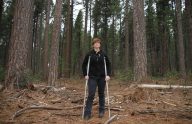PLF files appeal to guarantee public access to public forest
Today in the Ninth Circuit Court of Appeals, we filed our Opening Brief in Granat v. USDA, where we challenge the United States Forest Service’s order closing thousands of previously available roads and trails to motorized travel in Plumas National Forest. PLF represents individuals, recreational organizations, and local governments negatively impacted by the Forest Service’s decision to ban citizens from lawfully enjoying the natural beauty and recreational opportunities that had been permitted for generations. For example, our client Amy Granat, because of a disability, can access her favorite spots only by motor vehicle. The Service’s order therefore effectively bans Amy from what is after all a public forest.
Aside from the real-world harms that the Forest Service has caused, its decision-making process sidestepped the requirements of both the National Environmental Procedure Act (NEPA) and the Service’s own Travel Management Rule. They require the Service to (1) consider not simply the possible environmental impacts of a proposed action, but also meaningful alternatives; and (2) to “coordinate” with local governments while deciding how to designate roads and trails within national forests. Here, in deciding what to do with approximately 1,100 miles of existing user-created routes in the Forest, the Service created alternatives based on only about 400 miles—giving zero consideration to motorized-vehicle use in the remaining 700 miles of available routes. By ignoring two-thirds of the Forest’s routes in the process, the Service failed to consider truly meaningful alternatives and instead reached an all-but guaranteed shut-down of previous access. Further, instead of actually “coordinating” with Plumas and Butte Counties, the Forest Service merely (on occasion) met with and considered input from county officials. But these Counties, where over 1,000,000 acres of Plumas National Forest are located, have unique concerns—such as guaranteeing sufficient access for emergency services—to which the Forest Service gave only cursory consideration. Had the Service followed its legal obligations, it would have prepared true alternative plans based on the entire forest, and it would have planned its road designations in coordination with those most affected by its decision.
You can find our case page here, and our previous blog posts on this case here, here, and here.
Note: This post was slightly edited for clarity after its original posting.


